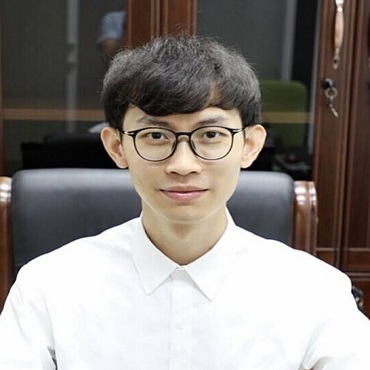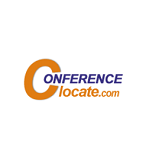
Microfluidics 2020

Theme: Driving the Future with Microfluidics & BioMEMS
International Microfluidics Webinar heartily welcomes the worldwide audience to participate within the conference that goes to be control in April 15, 2020 at Miami, USA. Microfluidics 2020 will focus many applications of lab-on-a-chip, from life science research, to taking diagnostics to the point-of-care/point-of-need and body-on-a-chip/organs-on-a-chip, LOAC device production technologies, novel designs/technologies for manufacture, the key application areas for LOAC from research to diagnostics as well as 3D-bioprinting and the convergence of microfluidics technologies with bio fabrication and 3D-printing. Microfluidic devices and systems have created an amazing interest in several application fields, as well as life sciences, purpose of care nosology, and environmental applications. The conference aims to assemble leading educational scientists, analysers and analysis students to exchange and share their experiences and research results on all aspects of Microfluidics and its development. There’s an intensive international perspective at this conference with speakers, poster presenters, sponsors, and exhibitors from Europe, US, and Asia/Pacific.
Session 01: Applications of Microfluidics & Lab-on-a-chip
Lab-on-a-chip (LOC) devices integrate and scale down laboratory functions and processes to a miniaturized chip format. Many LOC devices are used in a wide array of biomedical and other analytical applications including rapid pathogen detection, clinical diagnosis, forensic science, electrophoresis, flow cytometry, blood chemistry analysis, protein and DNA analysis. LOC devices can be fabricated from many types of material including various polymers, glass, or silicon, or combinations of these materials.
Lab-on-a-chip (LOC) devices integrate and scale down laboratory functions and processes to a miniaturized chip format. Many LOC devices are used in a wide array of biomedical and other analytical applications including rapid pathogen detection, clinical diagnosis, forensic science, electrophoresis, flow cytometry, blood chemistry analysis, protein and DNA analysis. LOC devices can be fabricated from many types of material including various polymers, glass, or silicon, or combinations of these materials.
-
Chemical synthesis, Drug Discovery & Development
-
Biomarkers, Circulating Tumor Cells & Single Cell Analysis
-
Biofabrication, Bioprinting & Disease Modelling
-
Diagnostic Devices and Applications
-
Food, Water, Environment Testing using Microfluidics
-
Nanofluidics and Analytical Nanotechnolog
Session 02: Droplet-based, Digital, Centrifugal Microfluidics
Droplet-based digital microfluidics is a topic with growing relevance to biological, chemical, and health-science fields. The high precision and excellent reagent economy of such systems are unparalleled. There are, however, fundamental challenges related to actuation and sensing in terms of system scalability, and these challenges are addressed within this chapter. In particular, a new digital microfluidics multiplexer is shown to overcome contemporary on-chip micro drop motion addressability issues and eliminate droplet interference challenges. At the same time, an integrated folded-cavity optical sensor provides highly localized and sensitive probing of internal fluid refractive indices. The complete system offers improved micro drop motion and sensing capabilities for future lab-on-a-chip technologies.
Droplet-based digital microfluidics is a topic with growing relevance to biological, chemical, and health-science fields. The high precision and excellent reagent economy of such systems are unparalleled. There are, however, fundamental challenges related to actuation and sensing in terms of system scalability, and these challenges are addressed within this chapter. In particular, a new digital microfluidics multiplexer is shown to overcome contemporary on-chip micro drop motion addressability issues and eliminate droplet interference challenges. At the same time, an integrated folded-cavity optical sensor provides highly localized and sensitive probing of internal fluid refractive indices. The complete system offers improved micro drop motion and sensing capabilities for future lab-on-a-chip technologies.
Session 03: Point-of-care & Biosensors
Point-of-care testing (POCT) is essential for the rapid detection of analytes near to the patient, which facilitates better disease diagnosis, monitoring, and management. Recent years have witnessed tremendous advances in point-of-care diagnostics (POCD), which are a result of continuous developments in biosensors, microfluidic, bioanalytical platforms, assay formats, lab-on-a-chip technologies, and complementary technologies. This special issue targets the critical advances in POCD and provides guided insights and directions for future research. It enables quick medical decisions, as the diseases can be diagnosed at a very early stage, leading to improved health outcomes for patients by enabling the early start of treatment. The global POCT market is expected to grow from US$ 23.16 in 2016 to US$ 36.96 billion in 2021 at the compound annual growth rate of 9.8% from 2016 to 2021.
Session 04: Wearables & Mobile Diagnostics
Wearable devices are currently at the heart of just about every discussion related to the Internet of Things. The requirement for self-health monitoring and preventive medicine is increasing due to the projected dramatic increase in the number of elderly people until 2020. Developed technologies are truly able to reduce the overall costs for prevention and monitoring. This is possible by constantly monitoring health indicators in various areas, and in particular, wearable devices are considered to carry this task out. These wearable devices and mobile apps now have been integrated with telemedicine and telehealth efficiently, to structure the medical Internet of Things. This paper reviews wearable health care devices both in scientific papers and commercial efforts.
Session 05: Micro-chemistry & Micro-systems
Micro-total analysis systems, or the so-called "Lab-on-a-chip", have attracted increasing attention because of their ability to integrate multiple biochemical processes at pL/nL-scale in a single device using microfabrication technology. The advantages of miniaturising and integrating genetic analysis include high speed, less reagent consumption, and a reduction in size of instruments. The development of microsystems or "Lab-on-a-Chip" for both biological and chemical applications is a fast growing field due to the ability of these devices to perform a complex set of successive operations at a scale not easily handled by human experimenter. If few of these systems have reached the market nowadays, there are many public and industrial researchers working together on worldwide research programs. In this paper we first present the two microsystem archetypes, the microarrays and the microfluidic systems and some of their applications in chemistry and biology (chemical microarrays, chemical microreactors, DNA chips, microseparation).
Session 06: Nano-channel, Micro-channel and Mini-channel
Micro-channels are characterized as stream sections that have pressure driven measurements in the scope of 10 to 200 micrometers. Methods/Statistical Analysis: It is assumed that the present work would provide new direction to the researcher in the field of micro channel heat sink. Findings: Subsequent to looking into the progression in warmth exchange innovation from a verifiable point of view, the benefits of utilizing micro channels as a part of high warmth flux cooling applications is examined and research done on different parts of micro channel heat exchanger execution is assessed. Application/Improvements: The present condition of manufacture innovation is looked into, taxonomically sorted out and found to offer numerous new potential outcomes for building micro-channels.
Session 07: Bio-fabrication & Bio-manufacturing
Bioprinting with the 3D-bioplotter allows medical researchers to combine cells, gels, fibers, polymers, ceramics, metals and more into a single scaffolded object that can replace a diseased, injured or missing body part, from tissue and bone to organs.
In fact, biofabrication research is being done in a wide range of areas:
-
Skin
-
Cartilage
-
Bone
-
Blood vessels
-
Organs such as the heart, kidney, placenta and ovaries
-
Drug and nutrient delivery
With biofabrication, a platform must be trusted to accurately place cells and mix materials in a sterile, temperature-controlled environment, as the 3D-Bioplotter has been doing for more than a decade. It also should be easy for researchers to use and manipulate for their various research needs.
Session 08: Optofluidics, Plasmonic and Bioimaging devices
Bio-imaging generally indicates imaging techniques that acquire biological information from living forms. Recently, the ability to detect, diagnose, and monitor pathological, physiological, and molecular dynamics is in great demand, while scaling down the observing angle, achieving precise alignment, fast actuation, and a miniaturized platform become key elements in next-generation optical imaging systems. Optofluidics, nominally merging optic and microfluidic technologies, is a relatively new research field, and it has drawn great attention since the last decade. Given its abilities to manipulate both optic and fluidic functions/elements in the micro/nanometer regime, optofluidics shows great potential in bio-imaging to elevate our cognition in the subcellular and/or molecular level.
Session 09: Acoustic Droplet Ejection
Acoustic bead discharge utilizes a beat of ultrasound to move low volumes of liquids (ordinarily nanolitres or picolitres) with no physical contact. This innovation centres acoustic vitality into a liquid example with a specific end goal to discharge beads as little as a millionth of a millionth of a litter. ADE innovation is an exceptionally delicate process, and it can be utilized to exchange proteins, high sub-atomic weight DNA and live cells without harm or loss of feasibility. This element makes the innovation reasonable for a wide assortment of uses including proteomics and based examines.
Session 10: Tissues-on-a-chips and 3D Cell Culture Systems
Lab on a chip and microfluidics are important technologies with numerous applications from drug delivery to tissue engineering. LOC integrates fluidic and electronic components on a single chip and becomes very attractive due to the possibility of their state of art implementation in personalized devices for the point of care treatments. The implementation of microfluidic devices within life sciences has furthered the possibilities of both academic and industrial applications such as rapid genome sequencing, predictive drug studies, and single cell manipulation. In contrast to the preferred two dimensional cell based screening, three dimensional (3D) systems have more in vivo relevance as well as ability to perform as a predictive tool for the success or failure of a drug screening campaign.
Session 11: Drug Discovery in Microfluidics
Session 08: Optofluidics, Plasmonic and Bioimaging devices
Bio-imaging generally indicates imaging techniques that acquire biological information from living forms. Recently, the ability to detect, diagnose, and monitor pathological, physiological, and molecular dynamics is in great demand, while scaling down the observing angle, achieving precise alignment, fast actuation, and a miniaturized platform become key elements in next-generation optical imaging systems. Optofluidics, nominally merging optic and microfluidic technologies, is a relatively new research field, and it has drawn great attention since the last decade. Given its abilities to manipulate both optic and fluidic functions/elements in the micro/nanometer regime, optofluidics shows great potential in bio-imaging to elevate our cognition in the subcellular and/or molecular level.
Session 09: Acoustic Droplet Ejection
Acoustic bead discharge utilizes a beat of ultrasound to move low volumes of liquids (ordinarily nanolitres or picolitres) with no physical contact. This innovation centres acoustic vitality into a liquid example with a specific end goal to discharge beads as little as a millionth of a millionth of a litter. ADE innovation is an exceptionally delicate process, and it can be utilized to exchange proteins, high sub-atomic weight DNA and live cells without harm or loss of feasibility. This element makes the innovation reasonable for a wide assortment of uses including proteomics and based examines.
Session 10: Tissues-on-a-chips and 3D Cell Culture Systems
Lab on a chip and microfluidics are important technologies with numerous applications from drug delivery to tissue engineering. LOC integrates fluidic and electronic components on a single chip and becomes very attractive due to the possibility of their state of art implementation in personalized devices for the point of care treatments. The implementation of microfluidic devices within life sciences has furthered the possibilities of both academic and industrial applications such as rapid genome sequencing, predictive drug studies, and single cell manipulation. In contrast to the preferred two dimensional cell based screening, three dimensional (3D) systems have more in vivo relevance as well as ability to perform as a predictive tool for the success or failure of a drug screening campaign.
Session 11: Drug Discovery in Microfluidics
Microdevices, since their inception in the last decade of the twentieth century, have changed our view of science, due to their potential applications in fields ranging from optics, semiconductors and the microelectronics industry to drug discovery and development, point-of-care clinical diagnostics, sensitive bioanalytical systems and other areas of the biological sphere. The potential applications of microfluidic platforms for drug discovery applications comprising high-throughput screening in target selection, lead identification/optimization and preclinical testing. Application of microfluidics in chemical analysis, as well as analysis of metabolites in blood for studying pathology, is also discussed.
Simulations of microfluidic devices are carried out for instance in the process of design of new apparatus for drug delivery. Whatever case, fluid flow simulation is only a part of the larger development process. After carrying out flow investigation, one can investigate for instance transport and diffusion of chemical species in such a device. The microfluidics Module brings you easily-operated tools for studying microfluidic devices. Important applications include simulations of lab-on-a-chip devices, digital microfluidics, electrokinetic and magnetokinetic devices, and inkjets. The microfluidics Module includes ready-to-use user interfaces and simulation tools, so called physics interfaces, for single-phase flow, porous media flow, two-phase flow, and transport phenomena.
The report "microfluidics market by Application (Genomics, Proteomics, Capillary Electrophoresis, IVD (POC, Clinical Diagnostics), Drug Delivery, Microreactor, Lab Tests), Component (Chips, Pump, Needle), Material (Polymer, Glass, Silicon) - Global Forecast to 2023", The microfluidics market is expected to reach USD 27.91 Billion by 2023 from an estimated USD 10.06 Billion in 2018, at a CAGR of 22.6%. The growing use of polymers is expected to lower the price of microfluidic products. In addition to this, growing investments, favourable regulatory policies, and growth in healthcare and biotechnology industries in emerging Asian markets are expected to provide potential growth opportunities for players operating in the microfluidics market.
North America accounted for the largest share of the microfluidics market in 2018, followed by Europe and Asia Pacific. The largest share of the North American region is mainly attributed to the higher incidence rate of chronic diseases, availability of insurance coverage for laboratory testing procedures, enough reimbursements for medical devices, and presence of well-structured distribution channels in the region. In addition, high demand for self-administration and home healthcare devices, and increasing applications of micropumps, inhalers, and transdermal microneedles for chronic conditions such as migraine, diabetes, cancer pain, and asthma have further resulted in the large share of this market.

The global microfluidic devices market size is predicted to reach $6.4 billion by 2020, growing at a CAGR of 23% during the forecast period. The market is driven by factors such as, increase in demand for point of care testing products, microfluidic technologies for miniaturization of chip, and rising demand for genomics and proteomics.
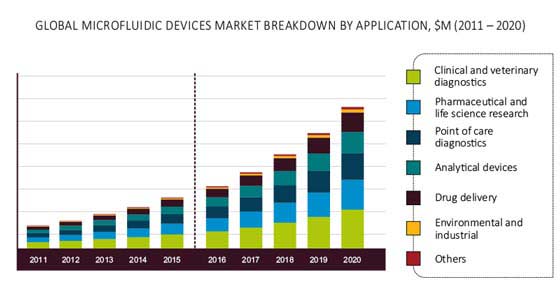

Global microfluidics market size by summing up the value of market segments divided on the basis of type of component, application, and materials. Further, each of these segments are sub-divided to cover all relevant categories.
-
Microfluidic Chips
-
Micro Pumps
-
Micro Needles
-
Other Components
-
Drug Delivery
-
High-throughput Screening
-
Point-of-Care Diagnostics
-
Lab Analytics
-
Proteomics
-
Genomics
-
Cell-based Assay
-
Capillary Electrophoresis
-
Polymer
-
Silicone
-
Glass
The North American region holds the largest market share in the market for microfluidics. This is attributed to factors, such as the well-established healthcare system, along with better reimbursement policies, and the higher adoption of novel therapeutics among the general population. Microfluidics is a vastly growing field in the United States, in terms of high budget sanctions for R&D. Molecular diagnostics and point-of-care diagnostics widely use microfluidic technology for various applications, and hence, they occupy a major market share in the United States. Owing to this, the United States has the largest market share of 88% in North America, and is expected to grow at a rate of 18.8% over the forecast period.
Some key industry contributors are Illumina, Inc., Agilent Technologies, Caliper Life Sciences (acquired by perkinelmer, Inc.), Cepheid, Danaher Corporation, Life Technologies Corporation (acquired by Thermo Fisher Scientific, Inc.), Bio-Rad Laboratories, Inc., Abbott Laboratories, F. Hoffmann-La Roche Ltd, and Fluidigm Corporation.
Companies are introducing new products to strengthen their market position. For instance, In February 2015, Illumina, Inc. Launched neoprep, an automatic DNA and RNA sample preparation platform. Through the neoprep microfluidics cartridge, 16 samples are prepared at a time. Innovation and research & development by the market players in the microfluidics segment are expected to propel the market growth in the coming years.
-
ETH Zurich
-
Swansea University
-
University of Manchester
-
Imperial College London
-
Cranfield University
-
University of Lincoln
-
Universitat Rivera
-
Virgilio - URV
-
Aberdeen University
-
Grenoble Institute of Technology
-
UCL (University College London)
-
University of Strathclyde
-
University of Cambridge
-
University of East London
-
University of Leeds
-
University of Tokyo
-
National University of Singapore
-
Tsinghua University
-
University of Bolton
-
Manipal International University
-
Amity University
-
Beijing Institute of Technology
-
Ted University
-
Rafik Hariri University
-
Emirates Aviation University
-
South Ural State University
-
Liaoning University of Technology
-
University Kuala Lumpur
-
Massachusetts Institute of Technology
-
University of Minnesota
-
University of Michigan
-
Stanford University
-
Iowa State University
-
University of Maryland
-
University of Wisconsin Madison
-
Penn State University
-
University of California
-
University of Texas
-
University of Wisconsin
-
European Federation of National Engineering Associations
-
European Association For Fluid Dynamics
-
Association Francaise De Mecanique
-
Institution of Engineers of Ireland
-
Institute of Physics And Engineering In Medicine
-
Russian Union of Engineers
-
Ordem Dos Engenheiros
-
Royal Academy of Engineering
-
Association For Project Management
-
Society of Engineers
-
British Nuclear Energy Society
-
Women's Engineering Society
-
Society of Professional Engineers
-
Institution of Mechanical Engineers
-
Technical Chamber of Greece
-
Union of Chambers of Turkish Engineers
-
Institute of Healthcare Engineering
-
Institute of Physics
-
Alpha Pi Mu
-
Alpha Omega Epsilon
-
American Association of Engineering Societies
-
American Indian Science And Engineering Society
-
American Institute of Chemical Engineers
-
American Nuclear Society
-
American Society For Engineering Education
-
American Society of Agricultural And Biological Engineers
-
American Society of Mechanical Engineers
-
American Society of Naval Engineers
-
Biomedical Engineering Society
-
Institute of Biological Engineering
-
The Institute of Industrial And Systems Engineers
-
National Society of Black Engineers
-
Society of Fire Protection Engineers
-
Society of Naval Architects And Marine Engineers
-
Society of Petroleum Engineers
Microfluidics 2020 will bring together microfluidics scientists and Nano-system people to showcase the newest developments and discuss future directions in microfluidic technologies and their applications in complex systems, broadly defined. The topics will be wide-ranging, including chemical synthesis, separations, advanced manufacturing approaches, energy and the environment, multiphase and colloidal systems, systems biology, synthetic biology, biophysics, organs-on-a-chip, and precision medicine. some important microfluidics applications have been plot so as to give a thought on how this new science can both assistance and lift look into in fields like science and prescription. In any case, there is a ton of space for enhancements so as to spread more microfluidics applications past research simply.
https://www.marketsandmarkets.com/PressReleases/microfluidics.asp
https://www.mordorintelligence.com/industry-reports/microfluidics-market
Meetings International successfully anchored its leading "2nd International Microfluidics Congress" slated on May 23-24, 2019 at Las Vegas, USA.
Microfluidics 2019 is distinguished with the attendance of Editorial Board Members of supported Journals, Scientists, young and brilliant researchers, business delegates and talented student communities representing more than 25 countries, who made this conference rewarding and fecund.
Our International Microfluidics Congress was based on the theme “Recent Advancements and Applications of Microfluidics and Fluid Mechanics” which has encrusted the below
-
Microfluidics Research and Advances
-
Biosensors, Types and Bio-sensing Technologies
-
Microfluidic Chip
-
Bio-MEMS/NEMS and Chips
-
Microfluidics in Nano-Medicine
-
Nanomaterials and Nanotechnology
-
Microfluidics in Pharmacy and Biotechnology
-
Lab-On-A-Chip Technology
-
Clinical Diagnostics
-
Point of Care Technologies
-
Fluidic Micro Actuators
-
Acoustic Droplet Ejection
The conference was initiated and embarked with an Opening Ceremony followed by a series of lectures delivered by members of the Keynote forum and Speakers. The peerless people who promulgated the theme with their exquisite talks were:
-
Richard Gray, Dolomite Microfluidics, UK
-
Chih-Hsin Shih, Feng Chia University, Taiwan
-
Ting-Yuan Tu, National Cheng Kung University, Taiwan
-
Adam S. Opalski , Institute of Physical Chemistry of Polish Academy of Sciences, Poland
-
Rana Altay, Sabanci University, Turkey
-
Oladayo Ogunyinka, Loughborough University, UK
-
Huzaifa Umar, Cyprus International University, Nigeria
-
Rucha Natu, FDA, USA
-
Guido Bolognesi,Loughborough University, United Kingdom
-
Ching-Te Kuo, National Taiwan University, Taiwan
-
Gabriel Leen, Polypico, Ireland
-
Popa-Simil Liviu Los Alamos academy of Sciences, USA
-
Ruey-Jen Yang, National Cheng Kung University, Taiwan
-
Prem Bikkina, Oklahoma State University, USA
-
Lorraine Bible, Hooke Bio Ltd., Ireland
-
Daniel Murphy, Hooke Bio Ltd., Ireland
-
Mariam Assadian, Heidenhain corporation, USA
-
Robin Oliveres, Elveflow, France
-
Stephen Groves , Dolomite Micrcofluidics, UK
-
Jin S Kim, Corning Incorporated, USA
Meetings International wishes to acknowledge with its deep sincere gratitude to all the supporters from the Editorial Board Members of our Open Access Journals, Keynote speakers, Honourable guests, Valuable speakers, Poster presenters, students, delegates and special thanks to the Exhibitors (Dolomite Microfluidics, Elveflow) for their promotion to make this event a huge success.
Meeting International on behalf of Organizing Committee Members, Editorial Board Members and Poster Judge congratulates the all attendees for their outstanding contribution in the field of Microfluidics and simultaneously encourage all the participants who tried to put their efforts in poster presentations and wish them success in their future research.
Conference Proceedings Link: https://www.scitechnol.com/conference-abstracts/microfluidics-2019-proceedings.html
Meetings Int. is a worldwide pioneer in delivering top notch gatherings, workshops and symposia in every significant field of science, innovation and medication worldwide receives 400,000+ online visitors with 1000+ sessions which confirm the outstanding pool of new users and visitors creating a platform to build your market place globally. Since its initiation, Meetings Int. has been related with national and global affiliations, organizations and elevated level people, committed to have world class meetings and occasions so its provide a big platform to show your product and advertise.
The explorer’s traffic is the benchmark for advertisement and the Microfluidics website is continually dragged in observer over the world. As specify by the Google Analytics, in excess of 72, 703 Researchers are visiting to our conference sites. Microfluidics help you to put the spotlight on your brand by advertising with more than 9 million+ readers worldwide and about 5 million+ hits every month on our site. We provide a good opportunity to boost your business on our platform. We offer a range of eye-catching advertising spaces and branding. Researchers from significant nations including United States, Japan, United Kingdom, India, France, Taiwan, and Germany visit our conference site. Subscribers and conference attendees can be your upcoming enthusiastic customers. We maintain high quality and ethical standards in event industry, which makes us unique and better than the rest.
Advertisement banner must be provided by the advertising company and must be in the jpg or jpeg format. The banner must be of high resolution and must not have copyright infringement.
For further queries, connect our Program Manager at microfluidics@annualmeetings.net; contact@meetingsint.com
You can also connect us via WhatsApp: +65 3158 1626 / +44 1250 400 009
Meetings International recognizes the commitment and amazing work in all fields of academics and research. By recognizing their contribution; Meetings International inspires and motivates scholars, researchers and academics by awarding the Best YRF and Researcher Awards in all academic disciplines and categories along with other specific awards. These awards include prestigious Certificate of Award with other gifts.
To be eligible for the award Students interested in having their posters considered for the Microfluidics-2020 conference, they must have submitted an abstract of their poster to the conference. The award committee will consider all posters that relate to the study of public opinion, whether they focus on theory, substantive findings, research methods, and/or statistical techniques used in such research. All posters will automatically be considered for the Poster Award and the posters will take place in the conference venue and Poster Judges will select the best posters. The winners will be formally announced during the closing ceremony. The winners will receive a certificate award.

Microfluidics 2020 gives the opportunity to young researchers in the different field of conferences. The best participants are selected as per their research abstract before the conference. If you are a young and dynamic researcher than you can join our conferences to explore new idea and research. A panel of judges will select the best YRF. Best YRF will be recognized publicly at the end of the conference. The Best YRF Award will be given to the most outstanding presentation presented by a participant who has registered under the student category. Undergraduates, Master students, and Ph.D. students will be considered under this category. Selection of the YRF will be made on the basis of the participant contribution in the respective research field each submission will be accepted based on the sessions of the conference. Irrelevant submissions will be rejected. The acceptance and rejection of abstract submissions will be selected by the committee. All submissions will go through a quality checking. Final approved abstract will consider for YRF award.

Microfluidics 2020 chooses a relevant keynote speaker to speak at conference. All accepted keynote speakers proposals will be considered for the Best Keynote Speaker Award. The committee will select a number of candidates for the award among the accepted proposals. The winner will be selected at the conference, taking into consideration both the proposal and the presentation. Best keynote speaker can help to boost motivation, change their way of thinking and make audience energized and inspired. For Keynote the person should be eminent or highly affiliated like Dean, Professor, HOD, Chair persons, CEO, CFO, MD etc. Selection of the Best Keynote Speaker will be made on the basis of the participant contribution and years of experience in the respective research field. Each submission will be accepted based on the quality of abstract and conference theme. Irrelevant submissions will be rejected .The acceptance and rejection of abstract submissions will be selected by the Organizing committee. All submissions will go through a quality checking. Final approved abstract will consider for Keynote award.

Microfluidics 2020 believes in recognising our best speaker. The best speaker is selected as per their research abstract before the conference. All winners are determined by a selection panel. This award is designed to recognise and identify outstanding speakers who have achieved recent extraordinary eminence and success. Being an outstanding speaker means to deliver a message that engages an audience. The outstanding speaker award will also be given on the basis of organization and professionalism of presentation, communication skills of the presenter and appropriate use of time. Each session will be evaluated separately. For speaker the person should be Professor, Researcher, Scientist, Entrepreneur etc. .Selection of the Speaker will be made on the basis of the participant contribution in the respective research field. Each submission will be accepted based on the quality of abstract and conference sessions. Irrelevant submissions will be rejected. The acceptance and rejection of abstract submissions will be selected by the Organizing committee. All submissions will go through a procedure of quality checking by our team. Final approved abstract will consider for outstanding speaker award.
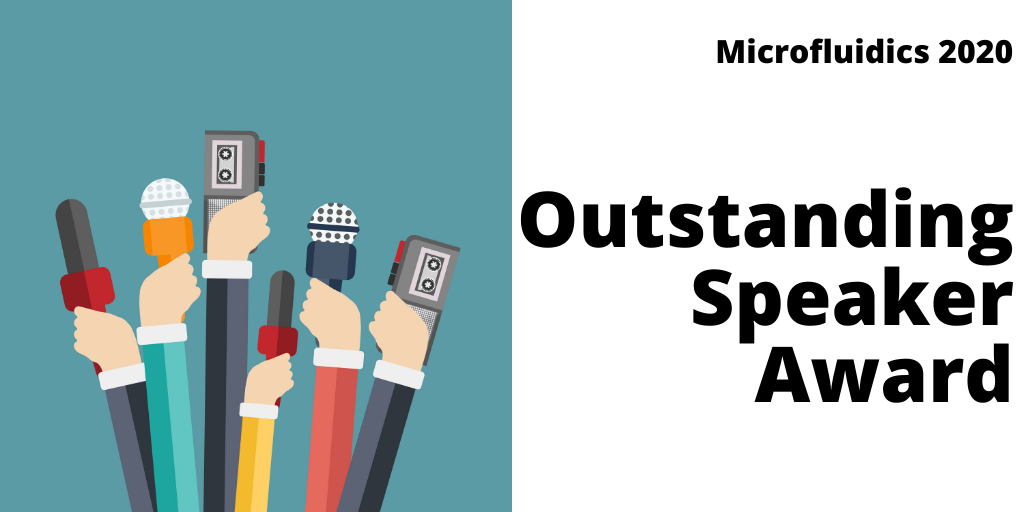
The organising committee can avail in the process of managing the multiple tasks that need to be done. Committee members, having a good erudition of the event management plan, are well placed to provide training, supervision and assistance to other personnel involved in the organisation of the event. Meetings International will honour as a best OCM the individual who has demonstrated their support and guidance throughout the conference. OCM should be eminent or highly affiliated like Dean, Professor, HOD, Chair persons, CEO, CFO, MD etc. .Selection of the best OCM will be made on the basis of the participant contribution and years of experience in the respective research field.They must have good number of research papers and citations and should be more number of years of experience.
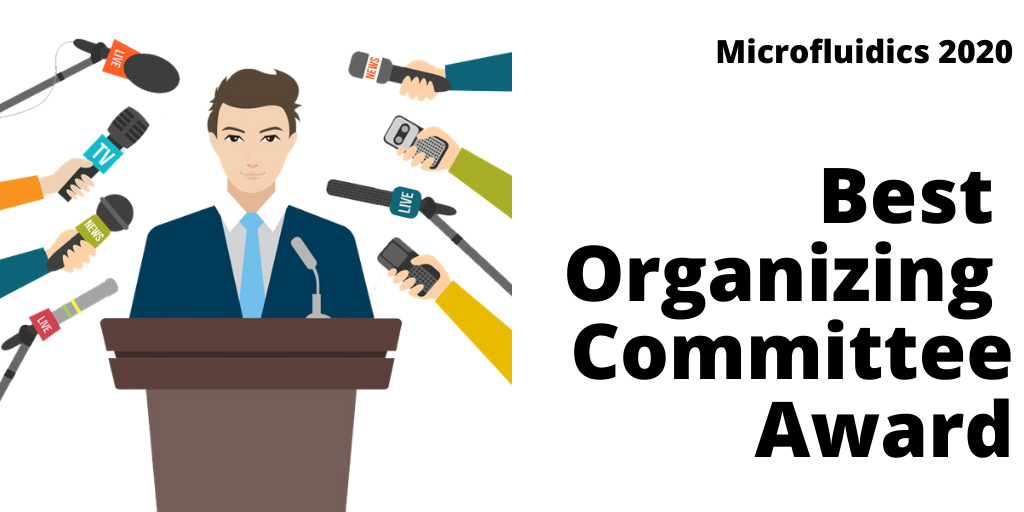
-
Poster Size: Each poster should be approximately 1x1 M long. The title, contents and the author’s information should be clearly visible from a distance of 1-2 feet
-
Content: Use fonts such as Arial/Times New Roman in a reasonable font size that should be easy to read
-
The spacing between the lines should also be taken into consideration
-
A very simple format should be used representing all the details about the research carried by the author
-
Long narrated paragraphs should be avoided
-
Short phrases and bulleted points should be used in the poster to present the main highlights of the work done
-
Only abstracts submitted in English will be reviewed
-
Abstracts must not exceed 500 words (excluding the title, author affiliation and biography)
-
Abstract should follow the instructions on the following template (Abstract Template)
-
Do not include references or figures in the keynote abstract
-
Abstract should contain biography, photograph and short description about research
-
Abstract must contain presenter name, affiliation and country
-
Abstract title and abstract content should be relevant
Young Scientist Awards at Microfluidics 2020 for the best researches in the field of Microfluidics and Bio-MEMS
Meetings International is announcing Young Scientist Awards through 4th International Microfluidics Congress (Microfluidics 2020) which is scheduled at Miami, USA during July 09-10, 2020. This Microfluidics conference focuses on “Driving the future with Microfluidics & Bio MEMS".
Microfluidics 2020 and upcoming conferences will recognise participants who have significantly added value to the scientific community of Microfluidics and provide them outstanding Young Scientist Awards. The Young Scientist Award will provide a strong professional development opportunity for young researches by meeting experts to exchange and share their experiences at our international conferences.
Microfluidics 2020 focuses mainly on Microfluidics, Bio-MEMS, Lab-On-Chip, Micro-Chemistry, Micro-Channel conference operating committee is providing a platform for all the budding young researchers, young investigators, post-graduate/Master students, PhD. students and trainees to showcase their research and innovation.
Eligibility: Young Scientists, faculty members, post-doctoral fellows, PhD scholars and bright Final Year MSc and M.Phil. Candidates. Persons from Scientific Industry can also participate.
Benefits: The Young Scientist Feature is a platform to promote young researchers in their respective area by giving them a chance to present their achievements and future perspectives.
- Acknowledgement as YRF Awardee
- Promotion on the conference website, Young Researcher Awards and certificates
- Link on the conference website
- Recognition on Meetings Int. Award Page
- Chances to coordinate with partners around the world
- Research work can be published in the relevant journal without any publication fee
- All presented abstracts will automatically be considered for the Award.
- All the presentation will be evaluated in the conference venue
- All the awards will be selected by the judges of the award category
- The winners of the Young Scientist Award will receive award certificate.
- The awards will be assessed as far as plan and format, intelligence, argumentation and approach, familiarity with past work, engaging quality, message and primary concerns, parity of content visuals, and by and large impression.
- All submissions must be in English.
- The topic must fit into scientific sessions of the conference
- Each individual participant is allowed to submit maximum 2 papers
- Abstract must be submitted online as per the given abstract template
- Abstracts must be written in Times New Roman and font size will be 12
- Abstract must contain title, name, affiliation, country, speakers biography, recent photograph, image and reference
To receive the award, the awardee must submit the presentation for which the award is given, for publication at the website, along with author permission. Failure to submit the PPT, and permission within the designated timeframe will result in forfeiture of award.
Official announcement of the recipients will occur after the completion of Microfluidics Conference.
- Applications of Microfluidics & Lab-on-a-Chip
- Droplet-based, Digital, Centrifugal Microfluidics
- Point-of-Care & Biosensors
- Wearables & Mobile Diagnostics
- Micro-chemistry and Micro-systems
- Nano-channel, Micro-channel and Mini-channel
- Bio-fabrication & Bio-manufacturing
- Optofluidics, Plasmonic and Bioimaging Devices
- Acoustic Droplet Ejection
- Tissues-on-a-Chips and 3D Cell Culture Systems
- Drug Discovery in Microfluidics
- Microfluidics Simulation
- Journal of Nanomaterials & Molecular Nanotechnology
- Journal of Biochemical Engineering & Bioprocess Technology
- Journal of Electrical Engineering and Electronic Technology
7 Organizing Committee Members
11 Renowned Speakers
Vienna Mott
Draper
USA
Omid Akbarzadeh
University of Malaya
Malaysia
Kari Ullakko
LUT University
Finland
Bruce McCord
Florida International University
USA
Petr Solich
Charles University
Czech Republic
Reza Abdolvand
University of Central Florida
USA
Hamid Sadabadi
Wireless Fluidics
Canada
Valerie Taly
CNRS
France
Alexander Govyadinov
HP Inc
USA
Romain Delamare
Medincell, France
France
Jiayue Shen
SUNY Polytechnic Institute
USA




